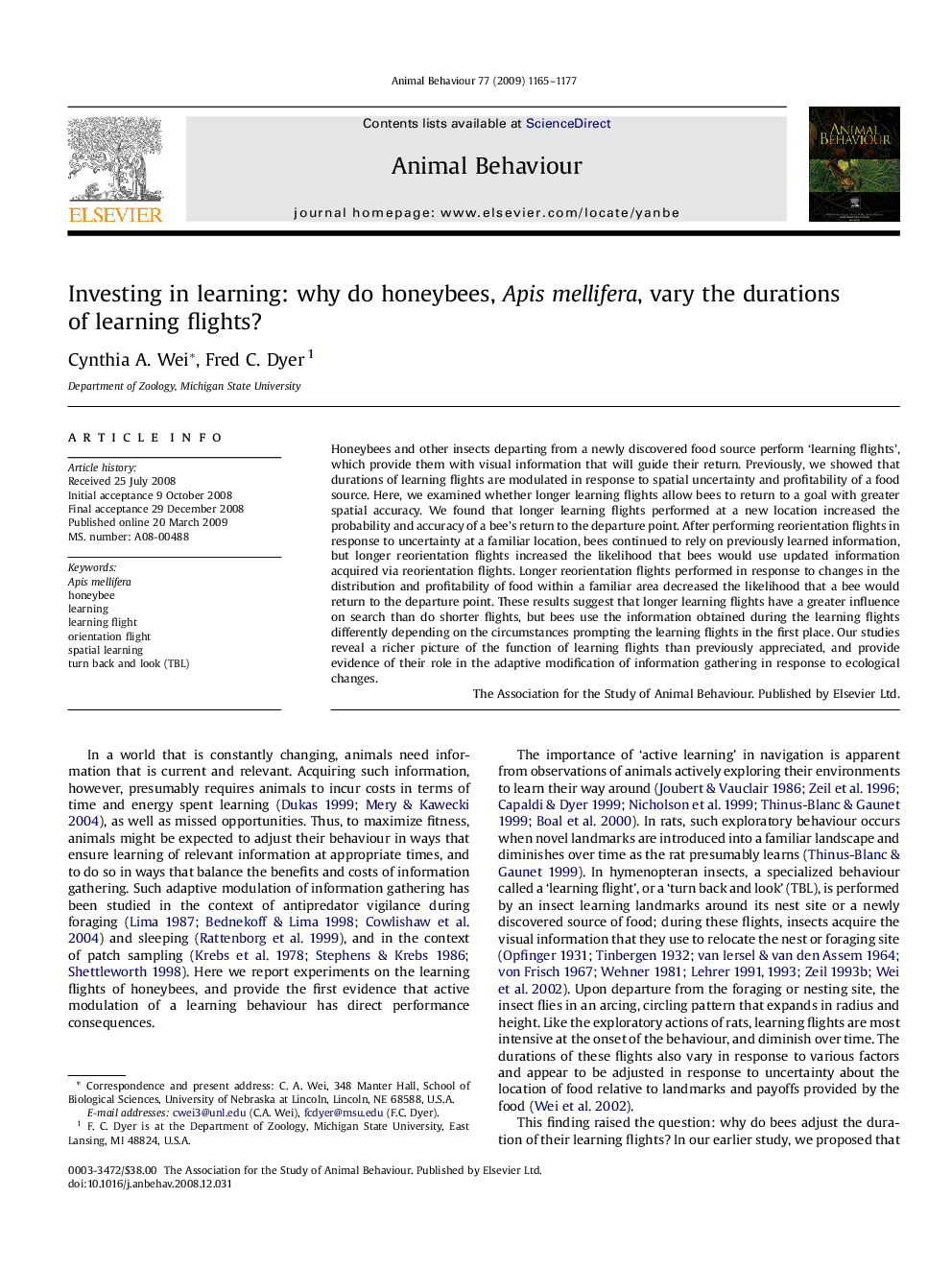| Article ID | Journal | Published Year | Pages | File Type |
|---|---|---|---|---|
| 2417631 | Animal Behaviour | 2009 | 13 Pages |
Honeybees and other insects departing from a newly discovered food source perform ‘learning flights’, which provide them with visual information that will guide their return. Previously, we showed that durations of learning flights are modulated in response to spatial uncertainty and profitability of a food source. Here, we examined whether longer learning flights allow bees to return to a goal with greater spatial accuracy. We found that longer learning flights performed at a new location increased the probability and accuracy of a bee's return to the departure point. After performing reorientation flights in response to uncertainty at a familiar location, bees continued to rely on previously learned information, but longer reorientation flights increased the likelihood that bees would use updated information acquired via reorientation flights. Longer reorientation flights performed in response to changes in the distribution and profitability of food within a familiar area decreased the likelihood that a bee would return to the departure point. These results suggest that longer learning flights have a greater influence on search than do shorter flights, but bees use the information obtained during the learning flights differently depending on the circumstances prompting the learning flights in the first place. Our studies reveal a richer picture of the function of learning flights than previously appreciated, and provide evidence of their role in the adaptive modification of information gathering in response to ecological changes.
